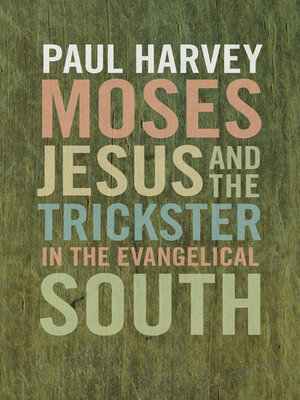Moses, Jesus, and the Trickster in the Evangelical South
ebook ∣ Mercer University Lamar Memorial Lectures
By Paul Harvey

Sign up to save your library
With an OverDrive account, you can save your favorite libraries for at-a-glance information about availability. Find out more about OverDrive accounts.
Find this title in Libby, the library reading app by OverDrive.



Search for a digital library with this title
Title found at these libraries:
| Library Name | Distance |
|---|---|
| Loading... |
Paul Harvey uses four characters that are important symbols of religious expression in the American South to survey major themes of religion, race, and southern history.
The figure of Moses helps us better understand how whites saw themselves as a chosen people in situations of suffering and war and how Africans and African Americans reworked certain stories in the Bible to suit their own purposes. By applying the figure of Jesus to the central concerns of life, Harvey argues, southern evangelicals were instrumental in turning him into an American figure. The ghostly presence of the Trickster, hovering at the edges of the sacred world, sheds light on the Euro-American and African American folk religions that existed alongside Christianity. Finally, Harvey explores twentieth-century renderings of the biblical story of Absalom in William Faulkner's Absalom, Absalom and in works from Toni Morrison and Edward P. Jones.
Harvey uses not only biblical and religious sources but also draws on literature, mythology, and art. He ponders the troubling meaning of "religious freedom" for slaves and later for blacks in the segregated South. Through his cast of four central characters, Harvey reveals diverse facets of the southern religious experience, including conceptions of ambiguity, darkness, evil, and death.







